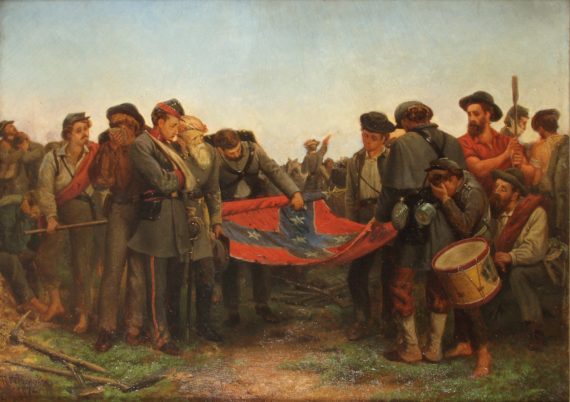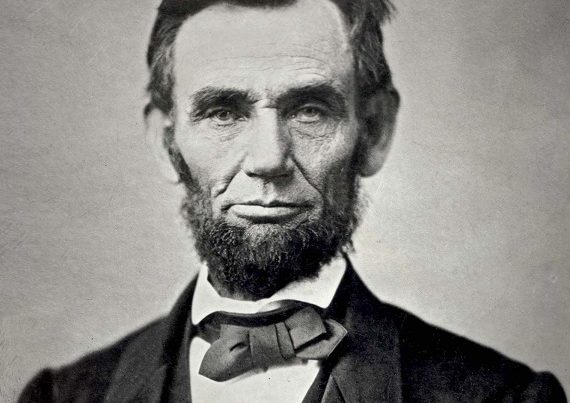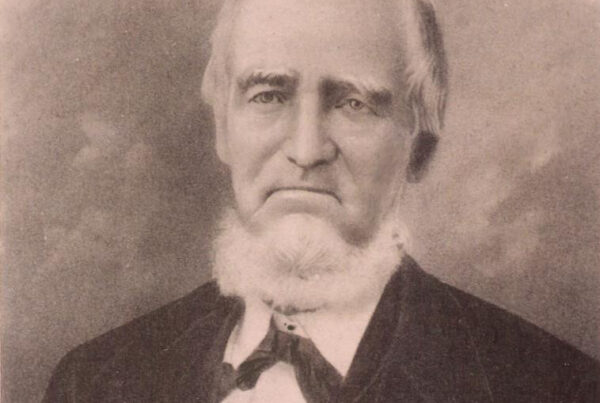One of my colleagues in the ministry of the Lutheran Church – Missouri Synod (LCMS) recently wrote that among “good uses” for the Confederate battle flag are “diaper, shop rag, kindling, stuffing for a pillow, burping cloth,” and “toilet paper.” In the ensuing discussion – which I was not a part of – he added, “It’s a treason/slavocracy flag. Plain and simple. It’s the revisionists that have a complete lack of understanding of history.”
Fortunately, this kind of churlish and disrespectful rhetoric is not common among my brethren in the ministerium.
But it is a helpful window into how much our education system and culture have degraded. There was indeed a time when the movie Idiocracy was a farcical comedy and not a documentary.
His assertion is that anyone who disagrees with him is a “revisionist” with a “complete lack of understanding of history.” My colleague is quick to point out that he is a Ph.D. student. I wonder if his Declaration of Historical Ignorance applies to scholars like Clyde N. Wilson, M.E. Bradford, Richard M. Weaver, Jr., or the twelve scholars known as the Southern Agrarians – among many others in the Southern intellectual tradition.
Maybe these men, unlike my enlightened and brilliant colleague, were all just stupid.
My colleague’s hubris is the inevitable result of history being taught in our schools as “social studies,” as political activism, where intelligent discussion is replaced by an iron-fisted intolerance of dissent, where history is not permitted to be a dialogue between different schools of thought, but rather a Pharisaical, virtue-signaling, one-size-fits-all interpretation to be determined by the state and its interests. And in such a Soviet-style 1619 Project-based “education” paradigm, there is no room for historiography or the examination of original source material from differing sides of a conflict.
In the current paradigm, there are not many perspectives and voices in the study of history, only the right view (which is politically-correct) and the wrong view (which is deemed “white supremacist”). The arrogance and ignorance in my colleague’s rhetoric takes the tack that he has read deeply on the subject, and has considered various perspectives. And having done so, anyone who disagrees with him is a “revisionist.”
But just what has been revised?
In any conflict, there are different assumptions and interpretations. That’s why there are conflicts. This is why there are debates and disputes, and this is why there are wars. Johnny says the toy is his. Mary says the toy is hers. Each child sees his claim as valid. If the children cannot agree, an adult will have to step in and resolve the dispute. And lacking such a judge, the larger and stronger child will simply prevail. And the smaller child’s perspective may or may not be remembered. The result of the bigger child winning may well simply be accepted by all as the outcome. But the point is that there is a dispute because there are two different claims of ownership.
In the war of American secession from Great Britain, there were two rival claimants as the legitimate overarching government of the colonies/states. And in international disputes, there is no authority, no adult to decide to which child the toy belongs. And so there is sometimes war to “settle” the matter. In the case of the First American War of Independence, the secessionists won, and American government schools generally teach the school of history friendly to the rebels, while the loyalist point of view, if taught at all, is downplayed.
And yet, regardless of who wins or loses, there are differences of opinion. To really understand what happened, it is important to consider all points of view – even if, and especially if, one’s opinion is biased toward one side or the other.
Our Confederate ancestors – be they the politicians who led, the military personnel who fought, or the civilians on the home-front who supported the war effort and suffered depredation – had a point of view. It was based on the Jeffersonian understanding of the Union, the compact theory of the Constitution. Their opponents held to the Hamiltonian perspective of the Union, the nationalist interpretation of the Constitution. This dispute predates the Constitution itself, as manifest in the debate between the so-called Federalists and the Anti-Federalists. To this day, both views are held by different camps of Americans. Without understanding this nuance, it is impossible to make sense of the conflict. Nor is it possible to go beyond the churlish historiography of “the toy is mine and anyone who disagrees with me is a poopy-head.”
Unfortunately, the “poopy-head” theory of history is precisely what is being taught in our schools and on our ubiquitous TV screens. It is pushed in popular culture and shrieked by activists. It is how most of our politicians operate. And it is, of course, based on the victors’ perspective and the Big-Government Hamiltonian school. It ignores the Jeffersonian model that has, of course, been around since the beginning of the Republic. It ignores the fact that there has been no “revision” – as the Southern perspective on the War for Southern Independence has been consistently taught for a century and a half. The idea that there was a consensus and a united historiography until now – when all of the sudden, people invented a new history, a revised history – is simply objectively untrue.
The radical changes in our culture and worldview: the resurgence of socialism, the new interpretation of all American history as “racist,” the plummeting test scores for Americans in literacy and math, the politicization of every educational subject, and even the normalization of the Frankfurt School’s Critical Theory in matters of race and sex are all evidence that we are not dealing with historical revisionism, but rather a social and cultural revolution. And the teaching of history has been coopted by this movement. The 1619 Project agenda – with its demonstrable falsehoods – has been mainstreamed. Sadly, my colleague has fallen for it. But it is also part of a psychological agenda to be on the Hegelian “right side of history.” People want to be part of the “winning team.” And from where we stand right now, the malleable and political “right side of history” is with the iconoclasts who are toppling monuments – not only memorials to Confederate history, but to American history as a whole. My colleague will either one day scratch his head when statues to Washington, Jefferson, and even Lincoln and Grant come down (which has already begun), or he will be so invested by that point that he will be part of the mob, self-righteously calling for their eradication.
But perhaps more disturbing than his shocking ignorance of history and historiography is his hatred toward people who hold the Confederate battle flag with reverence.
Symbols are, by nature, subjective. Most Americans hold the Stars and Stripes dear. And this can be for many reasons. It may be as simple as a love for one’s home. It may be that one’s family members fought in past wars for the nation. It may be that one sees in the flag the principles of liberty. Or it may be a combination of all three.
But there are also other opinions.
Perhaps someone is a recent immigrant without any particular sense that the flag represents his home. It may be that one’s ancestors – like perhaps the American Indians – fought against the United States, and may have even been oppressed by the United States or by individual Americans. It may be that one believes that the premise of liberty is a lie, as one’s family may have been transported as slaves on boats flagged with Old Glory, or one’s recent family were interned in camps for Asians during World War II with the Stars and Stripes on the flagpole, or maybe one has been railroaded by a crooked prosecutor representing the federal government.
How might a victim of the My Lai massacre see the US flag? How about those whose families were incinerated by bombs dropped on civilian targets by the United States? What if one’s entire family, innocent of any wrongdoing, were wiped out in a drone strike? Do such events in history mitigate against a family in Peoria putting out Old Glory on the house for the 4th of July? Would it be within the grounds of propriety to suggest that the flag of the United States should be used as toilet paper?
After all, as the 1619 Project will gladly point out, just as Robert E. Lee was an aristocratic Virginia rebel who fought for a county that had black slaves, so too was Washington. In fact, Washington’s image appears on the great seal of the CSA. Every stripe on the current US flag stands for a slave state in 1776. Nearly every signer of the Declaration of Independence was a slaveholder. And on that 4th of July, the slaveholding United States seceded from a nation that had abolished slavery. The 1619 Project holds that the entire reason for being for the United States was the preservation of slavery, and thus slavery must be the single interpretive lens for reading American history.
The narrative sounds vaguely familiar, doesn’t it?
Another similar disagreement over history and symbols is seen in the intertwined history of England and Scotland. For centuries, Scottish rebels fought in wars of independence against their English overlords. In the 13th and 14th centuries, Sir William Wallace led the Scottish bid for independence, until he was captured. He was tried for treason, tortured, and executed as an enemy of the state. His head was put on a pike to discourage any further rebellions. Centuries later, following another Scottish rebellion in 1745 – one that members of my own namesake ancestors participated in – the defeated Scots, who had already been banned from speaking their native language, were proscribed from wearing their traditional tartan symbols of their tribal allegiances.
And yet today, a monument and statue of William Wallace stands at the site of one of his greatest victories over England. Today, members of the English royal family wear kilts bearing the tartans of their own Scottish ancestors. The flags of Scotland and England are both part of the flag representing the political Union between the two. And in spite of both waving the Union Jack, both singing God Save the Queen, they are separate countries. When there is a soccer game between England and Scotland, the English sing their national anthem Jerusalem, while the Scots sing their anthem of rebellion Flower of Scotland. Both sides have a perspective, a narrative, a historiography, but as a people coexisting in a Union, there is mutual respect. And while the flags of England and Scotland are waved by the rivals in the stadium, and while both sides see their own view as correct, neither side considers it to be its duty to crush a different perspective, or use the other side’s symbols for toilet paper.
Southerners are like their British cousins, being inclined to remember their ancestors and nations, while the denizens of other regions of America scoff at such nostalgia.
I have no particular affection for the national symbols that are not my own nor of my heritage. But I certainly understand that other people do hold these symbols with reverence. I could not imagine telling my Russian, Kenyan, or Brazilian friends that I would like to use their flags for toilet paper. I may not respect their symbols as they do, but I respect the people who do respect them, and I understand that which they hold dear may not be that which I view with reverence.
The Confederate battle flag as we know it today became a unifying symbol for the defeated South, and has since also become a symbol of many things: rock and roll rebellion, motorcycle culture, Southern music, food, and folkways, as well as a symbol of political liberty – as it was waved in East Germany and other Iron Curtain countries as Communism fell and nations held captive were permitted to secede and establish home rule apart from colonial oversight. It continues to be treasured the world over. It is a symbol that we continue to place at the graves of our ancestors – a characteristic of Southern culture that often mystifies people from other regions who perhaps could not even tell you the names of their own grandparents, have no particular attachment to familial land, and who care little for their heritage.
How many bumper stickers or tee shirts have you seen that say, “American by birth, Midwestern by the grace of God”?
I have been a member of the Sons of Confederate Veterans for nearly 30 years. It is in one sense a genealogical society, but it is really much more than that. When the Confederate veterans returned to civilian life, they received no federal pensions, and in many cases, their destroyed states were too poor to provide for their needs. And so, they created a veterans’ organization, the United Confederate Veterans (UCV) in 1889. And their daughters stepped up, establishing the United Daughters of the Confederacy (UDC) in 1894 to establish homes for the aging veterans and to erect monuments and grave markers. Their sons established the Sons of Confederate Veterans (SCV) in 1896 to be the legal successor organization to the UCV.
There has been a continuum from the veterans themselves, to their sons and daughters, to their grandchildren who continue to honor their memories today. We are the guardians of their history, their stories, and their artifacts. We have their diaries and their writings. We have their uniforms and their flags. We meet each and every year, as we have without fail since 1896. We are the inconvenient speedbumps to the 1619 Project and its Orwellian scheme to rewrite history and crush dissent. And we are also living monuments, whose very existence is repugnant to the keepers of the Marxist oppression narrative.
Perhaps the most repugnant aspect of my colleague’s words is the obliviousness to the fact that other people, those who have a different historiography than he, those with family ties to the South, hold the Confederate battle flag with affection, see it as a symbol of their own families – ancestors and descendants alike – and use it as a funerary device. Of course, we continue to mark and visit the graves of our veteran ancestors – some of whom lived full lives after the war and were buried in family plots, and some of whom fell in battle and were thrown into unmarked trenches and mass graves. The monuments across the South serve as grave-markers for those who were never found.
Today, not only are these statues, many more than a century old, being toppled by mobs (often while police watch passively) and removed by legislatures, mayors, and governors – even grave markers and tombstones are being vandalized and destroyed, all with self-righteous justification. And of course, this cancer of the vandalism of graves has metastasized and spread even to the Tomb of the Unknown Soldier of the American Revolution.
When nothing is sacred, even funerary symbols are treated with contempt.
And the Confederate battle flag is not only used to mark the graves of Confederate veterans. For it is a symbol of our heritage, and our families are a continuation of that heritage. For example, when my fifteen year old son died suddenly and tragically last year, he was buried with certain symbols. First, of course, was the cross that he wore to serve with me at the altar for seven years. The cross is the symbol of his redemption and of his impending resurrection. Second, he was buried in the dress blue uniform of the US Air Force Auxiliary: the Civil Air Patrol. He loved serving his community, state, and nation, and held the rank of Cadet First Lieutenant. He saluted the US flag and was even called on a live mission for the Air Force on one occasion. Like many Confederate descendants, he was an American patriot and served his country insofar as he was able to do so at his young age.
I do regret that I didn’t also bury him with a piece of the MacBean family tartan, as he was proud of that aspect of his heritage as well, and the DNA in his bones reflect our brave ancestors who fought for their country and clan, as well as for political liberty and independence. That too is part of who we are as a family – past, present, and future.
But I did bury my boy, a member of the Sons of Confederate Veterans, with two Confederate battle flags (a generic one, and the flag of a Virginia military unit) – the symbols of which my colleague thinks should be used as toilet paper. By contrast, that symbol meant a great deal to my son. He knew his heritage. And just as he saluted Old Glory, he also saluted the flags of the Confederacy. He stood for Dixie. Along with his favorite pop music, he listened to the old songs of our ancestors: Dixie, The Bonnie Blue Flag, I’m a Good Old Rebel, and many others. He understood that God created him incarnationally as part of a family, bearing flesh that was given to him from his ancestors: including men who fought for Scottish independence, American independence, and Southern independence.
Tolerance is the hallmark of a civilized and intelligent people. Only barbarians and savages cannot understand that there are many different sides to a conflict, and that it is natural and laudable to honor one’s fathers and mothers and respect one’s heritage while being respectful of the heritage of others. Our country and our culture have descended to a dark and sinister place, one where there are masters on the top of the pyramid, who dictate history and historiography to the rest of us, who sit in judgment of our heritage and of our ancestors, who tell us what we are permitted to believe and hold dear, a place where we who dissent are being increasingly marginalized, proscribed, and even subjected to violence.
And no matter how crass, vile, hateful, and churlish people like my colleague are, and will continue to be, I am honored that my son awaits the resurrection with symbols of who God created him to be in this life: a Christian, an American, and a Southerner – as well as a dissident against an increasingly intolerant and totalitarian culture and state.
May he rest in peace until I see him again. Deo vindice.








Thank you for this article. God bless. We’ve had monuments destroyed in California also.
Nice post. Thanks for sharing.
Tom Crane